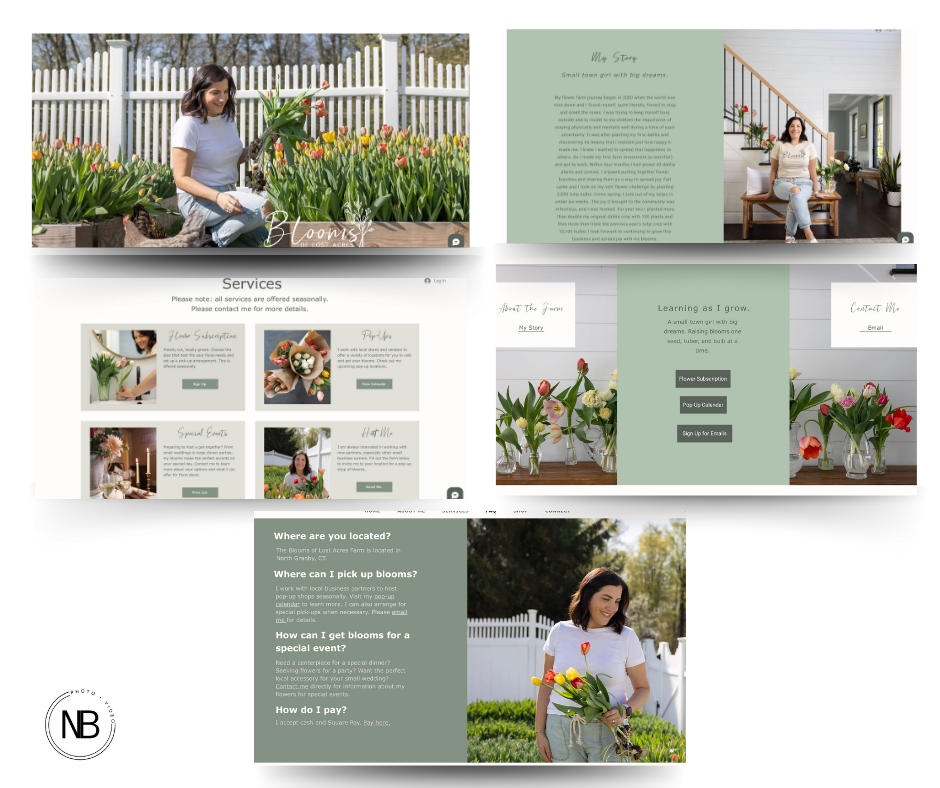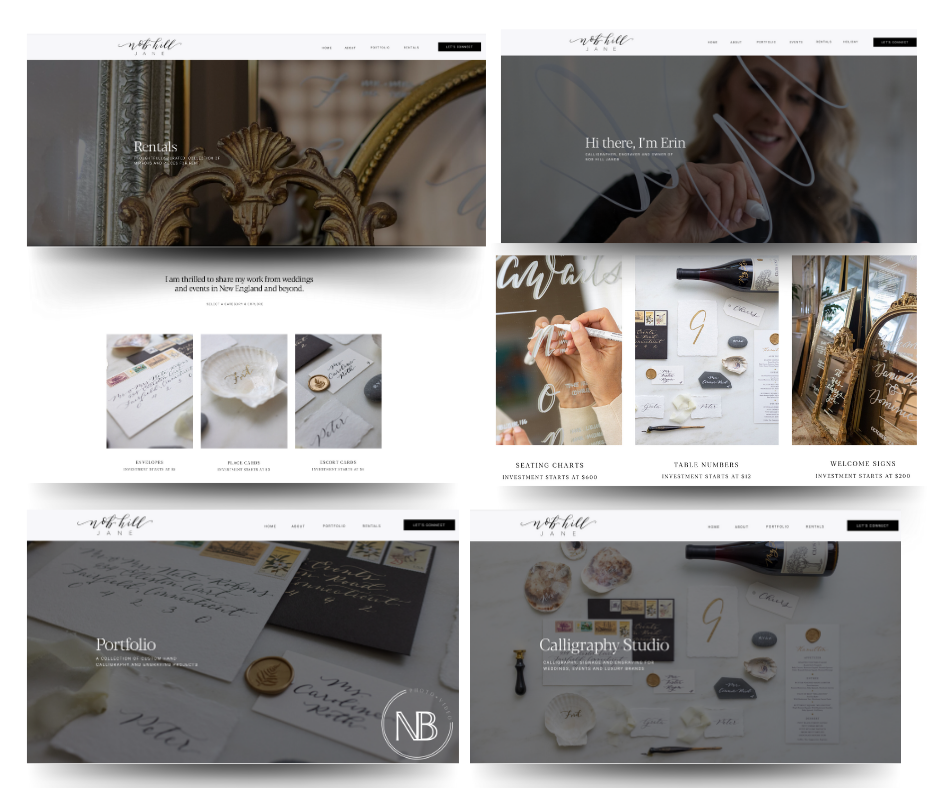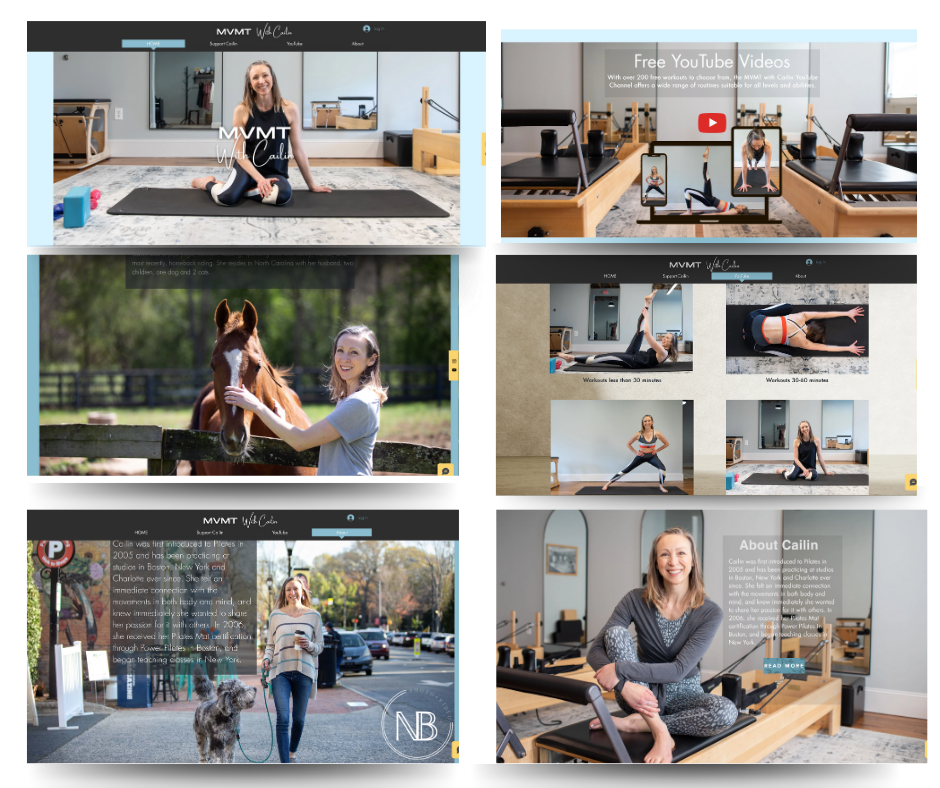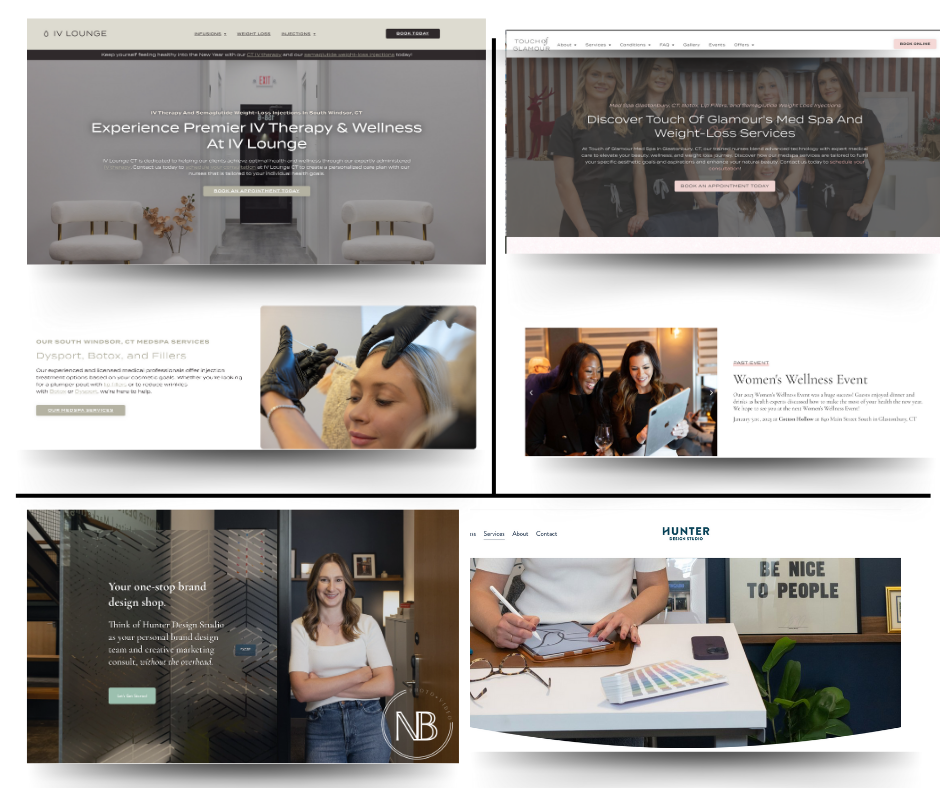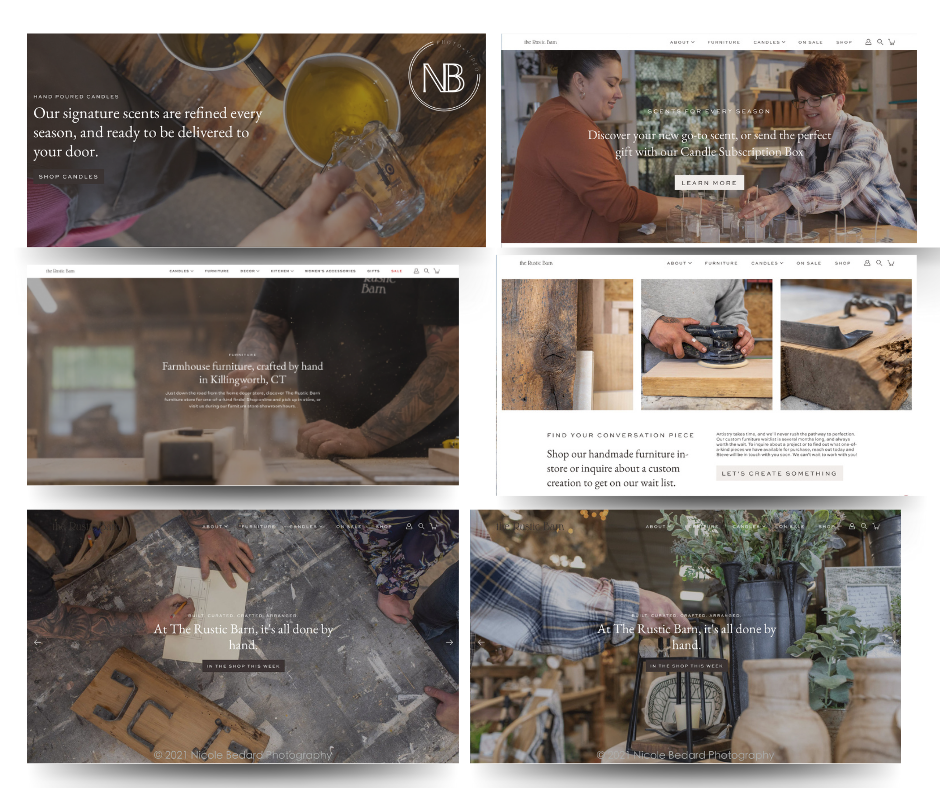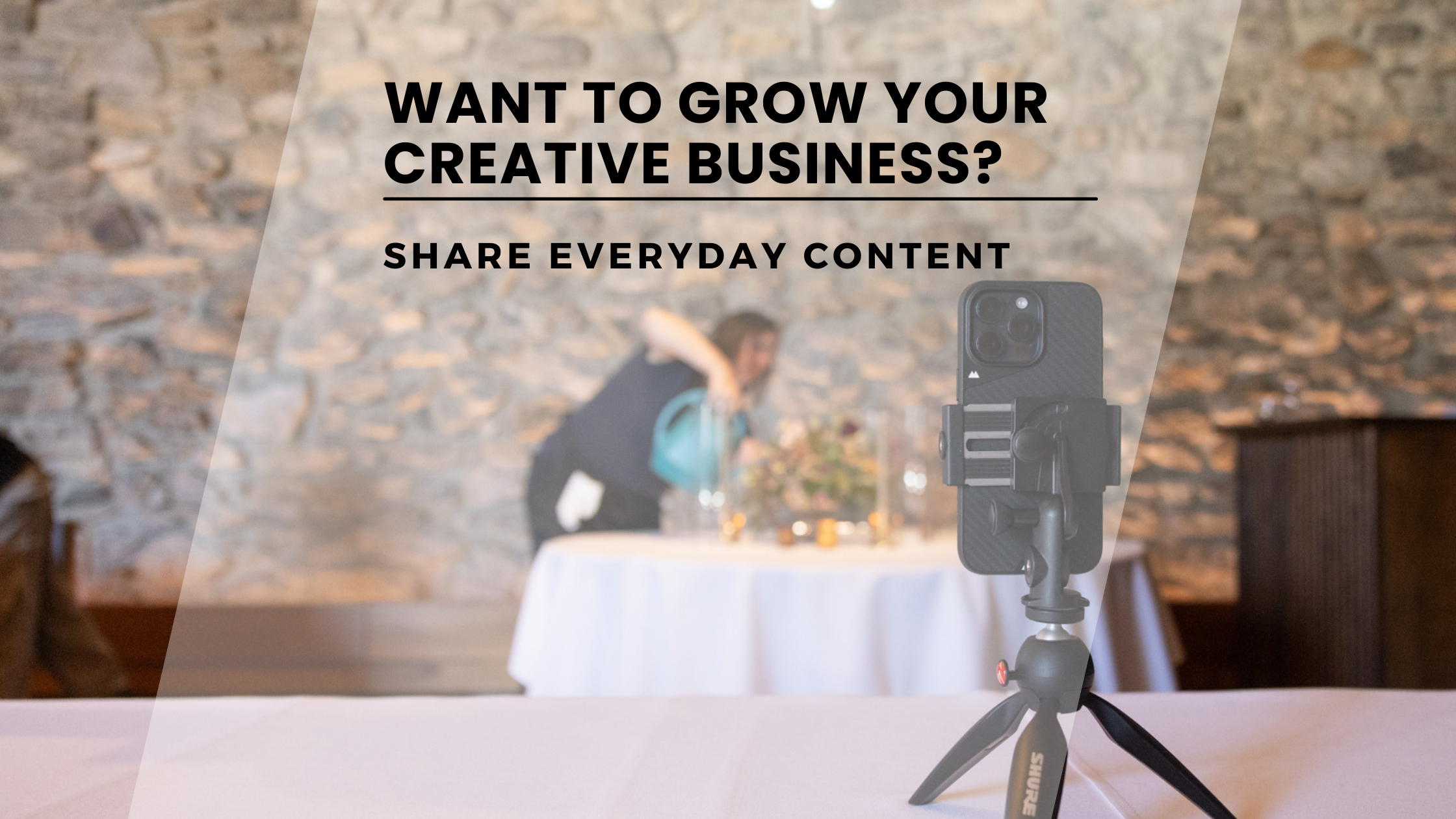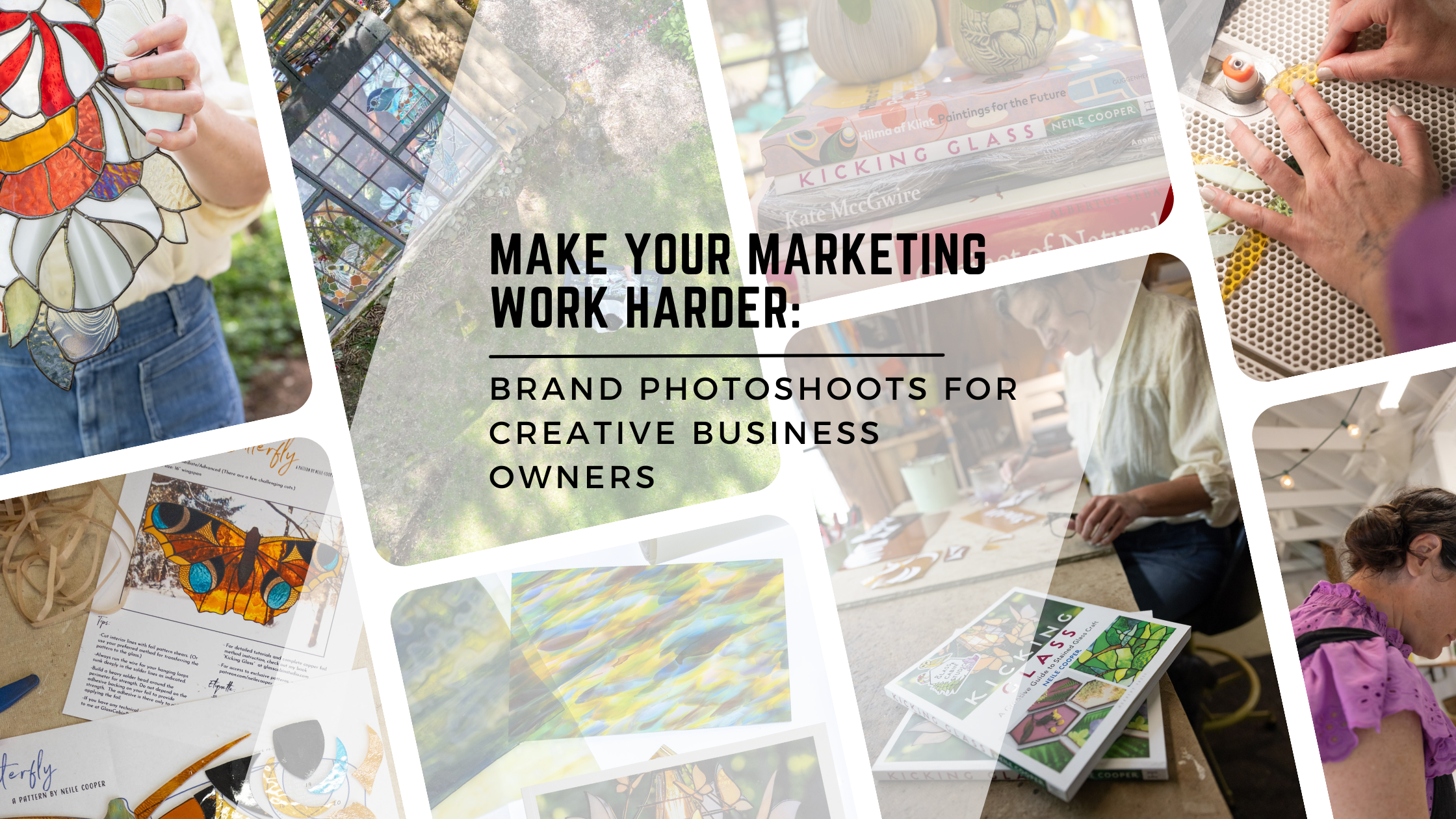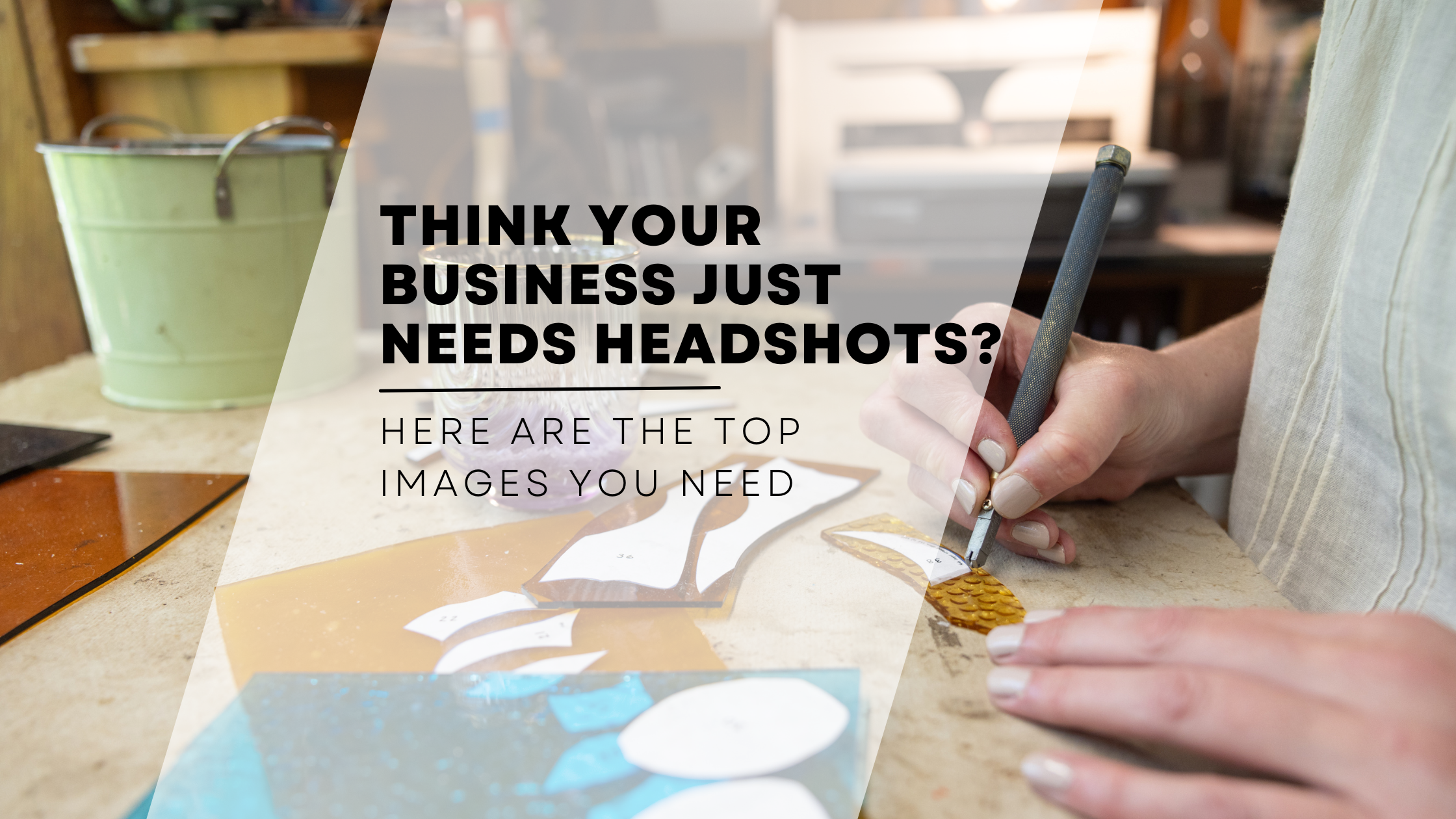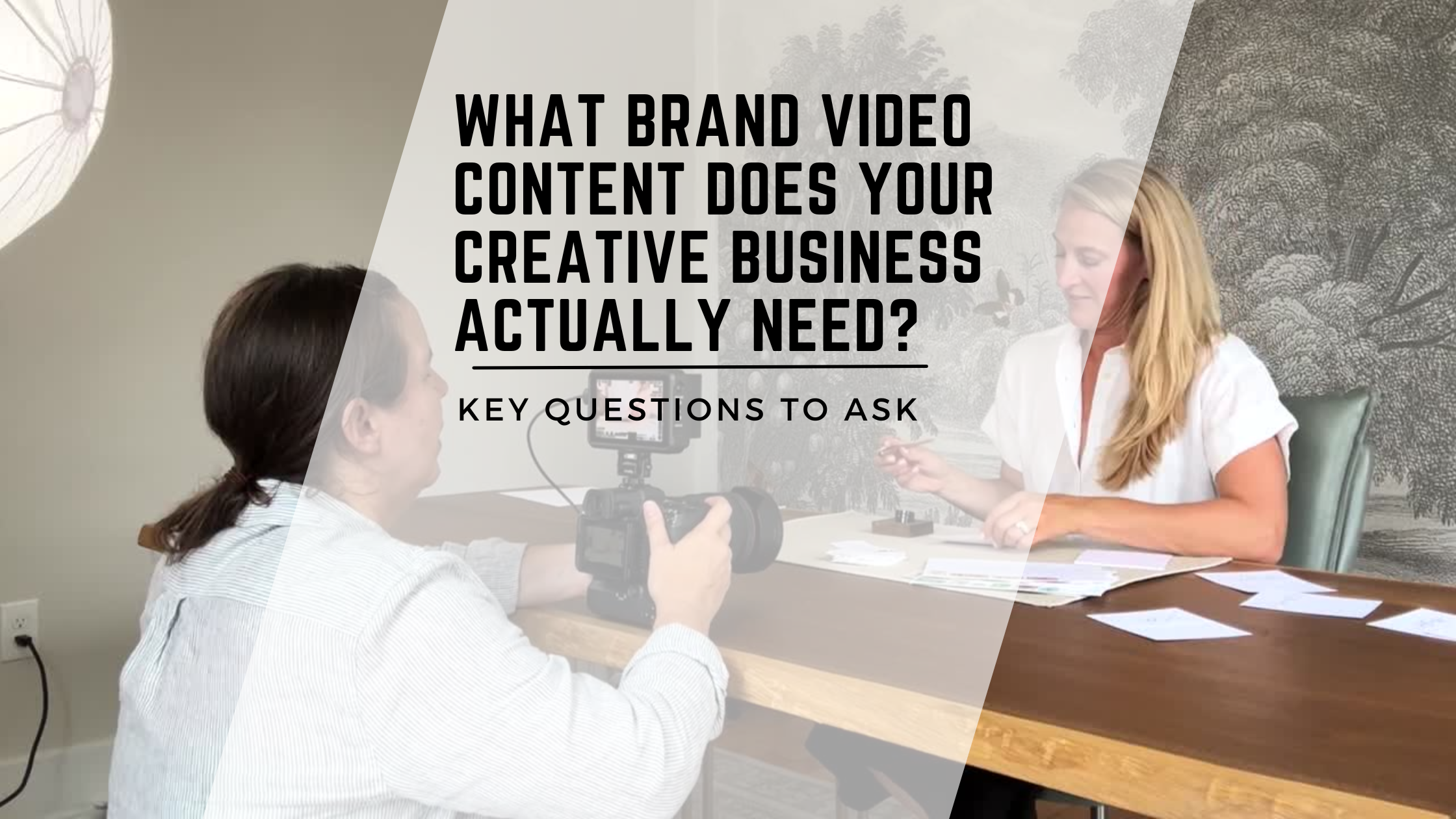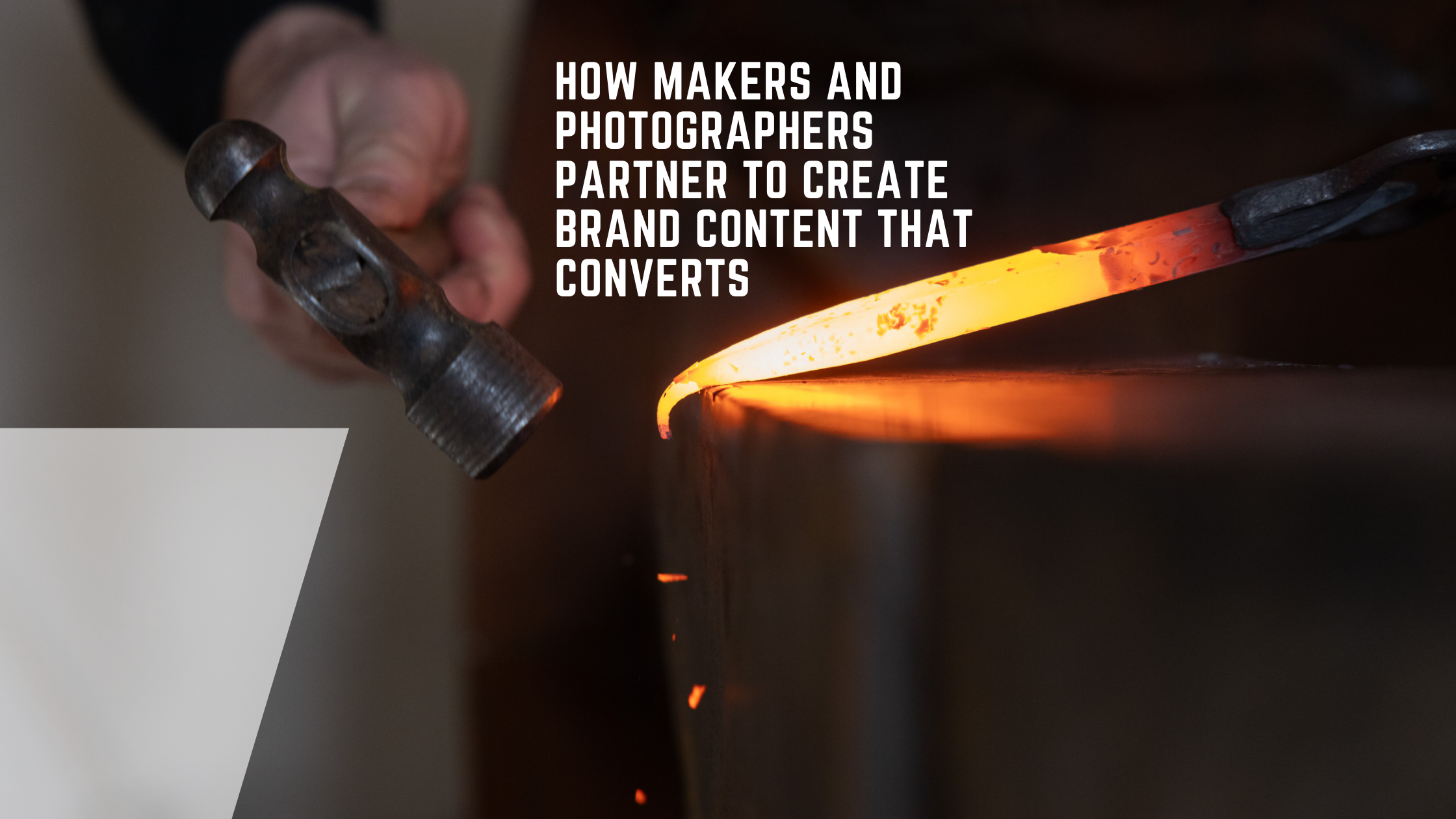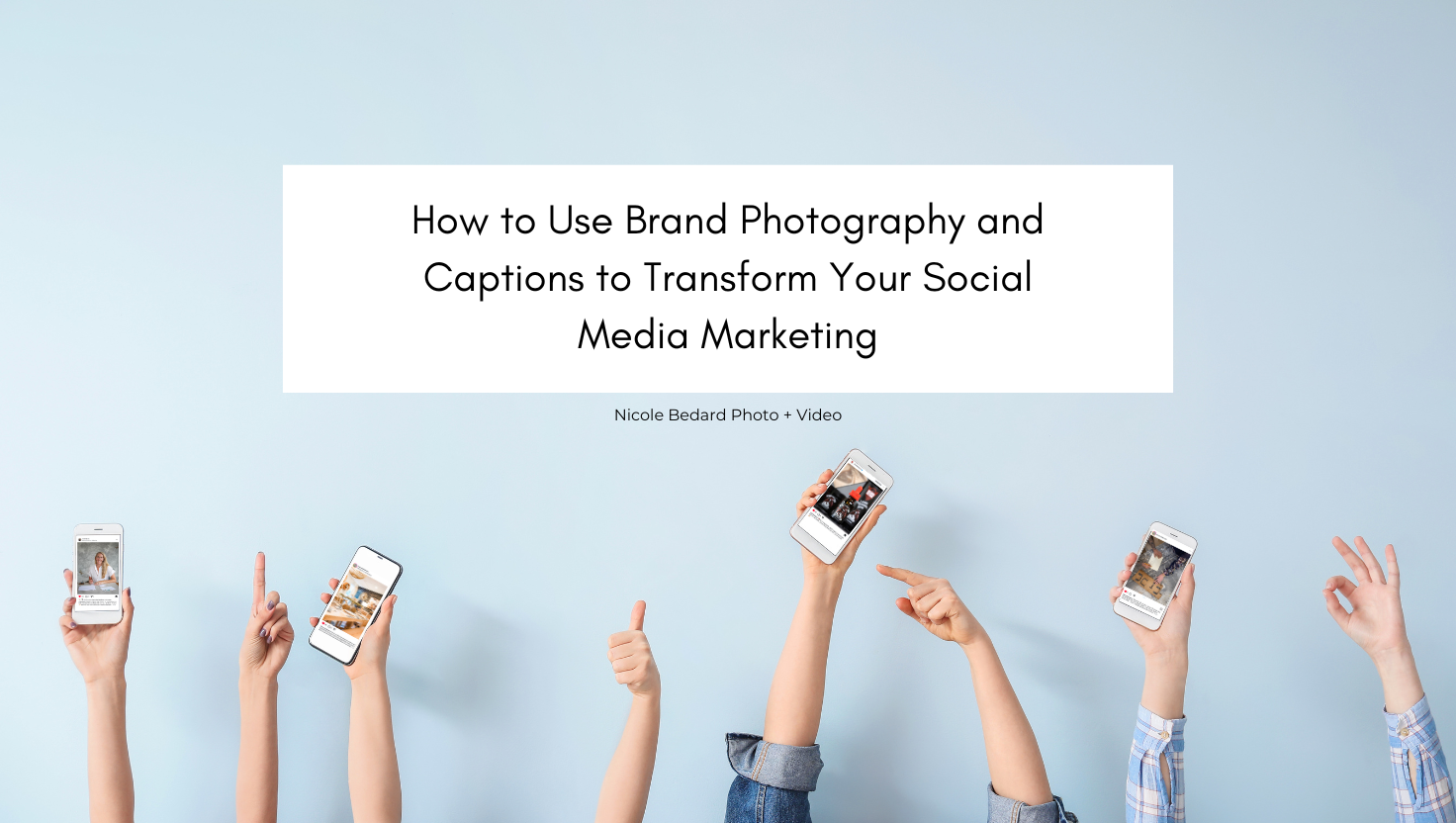Are you in the middle of a website rebrand, or maybe just starting to think about it? If so, it can be confusing to figure out where to start.
A lot of my clients get in touch with me right at this key moment. It’s an exciting time, full of possibilities, but there are some common hurdles too.
The biggest pain point of all?
You’re sick of rummaging through stock photos that leave your website looking like everyone else’s.
You might not have thought much about brand photos before the website design process, but now it’s really clear how important they are, making you wonder…
- What images truly represent my brand?
- How can I stand out?
- What will resonate with my audience?
Plus, you want to select images that not only embody your brand but also work seamlessly with your web design and written content.
The process can be daunting.
You deserve a site that captures the core of your brand and sweeps potential clients off their feet so they take action.
A website that makes them go, “Where do I click to make this official?”
That’s the power of choosing brand images with a plan and a purpose.
The right visuals can make all the difference, whether you’re sprucing up an existing site or starting fresh. They’re powerful connectors between you and your customers, showcasing what’s truly unique about your business.
By choosing imagery that really shows who your brand is and what your story is about, you do more than just make your site look good. You also help your design and content teams put together a clearer and stronger message that speaks to your audience.
In this blog, I’ll introduce you to six essential types of brand photos every website needs with examples of past client projects so you can dump the dull, yawn-inducing stock photos and confidently elevate your website from ordinary to outstanding.
Pro Tip: Pair this blog with this handy YouTube video and free checklist. Tick off each website image type as you go, and you’ll be ready to dazzle your web designer.
The Impact of Brand Images
Your website is more than just a digital space – it’s the stage where your brand’s story unfolds.
Now, what if each section of your site – your unique approach, your offerings, your process, and the ‘how-to’ for clients to hop on board – had its own scene-setting imagery?
I’m talking about photos that make each scroll an immersive experience instead of a static info dump. They invite visitors into your world, building familiarity, trust, and connection.
Take a look at how brand imagery supported the structure of this client’s website:
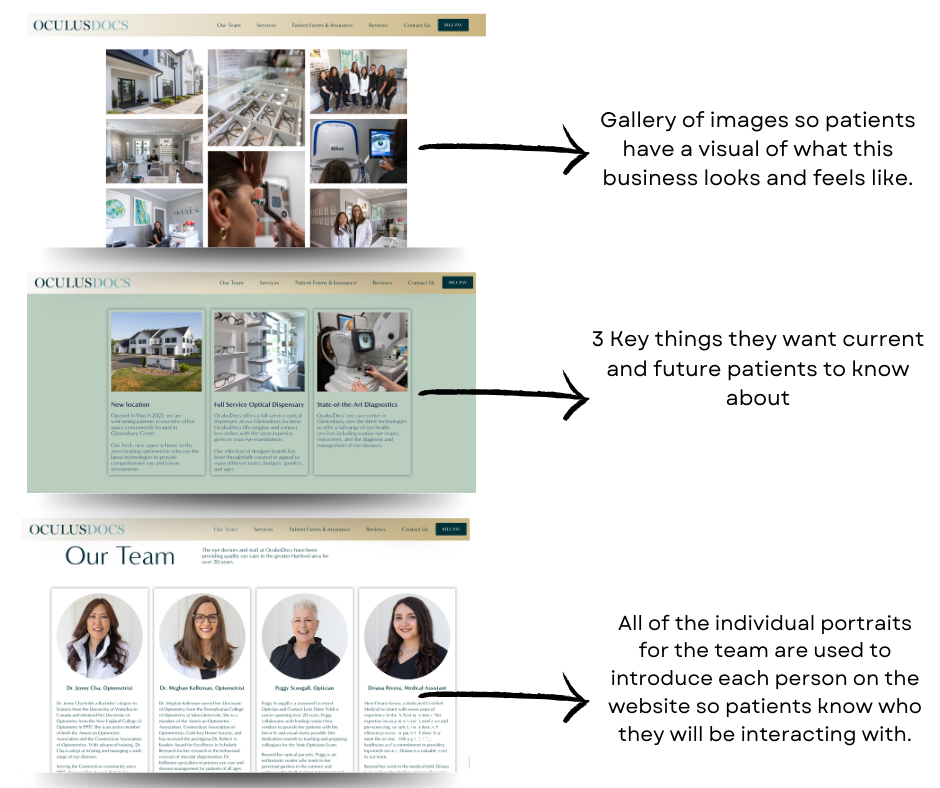
The words on your page help decide the right pictures for your business. With your text and images all set, your web designer can then focus on user experience (UX), making sure your site is not just good to look at, but also easy and enjoyable for your visitors to use.
Why Web Designers and Copywriters Advocate for Strong Brand Imagery
Strong brand images are crucial for both web designers and copywriters. They not only make building a website easier but also help tell your brand’s story more effectively.
To give you the best insights, I’ve brought in the pros to explain how the right images can streamline your web design and power up your messaging.
Easier Design Process
When you have a set of brand images ready to go, the web design process becomes much smoother and more cohesive. These images give web designers a clear visual direction and help to integrate all elements of the site seamlessly.
Web designers often refer their clients to me at the beginning of a website redesign, because they understand how much good brand photos can improve the process and the final product.
As Danielle Hunter, a seasoned graphic and website designer, explains, the power of brand imagery is a key discussion point from the very start of her design process.

Danielle Hunter of Hunter Design Studio shares,
“Many elements make up a well-designed website, including user experience, targeted copywriting, and brand photography. Professional images not only reflect your brand’s aesthetic but also build consistency and trust. Remember, your web designer will always appreciate the effort put into professional photos!” – Danielle Hunter, Hunter Design Studio
Pro Tip: Consider the ‘empty’ space in a picture – as a photographer, I see the beauty and utility in this ‘negative space’. It’s not just emptiness–it’s valuable space for text, enhancing the image’s functionality in a website’s design.
As Danielle puts it, “Good photography with planned negative space is a crucial element in the design that shouldn’t be overlooked.”
Here’s a collection of images that demonstrate the use of negative space:
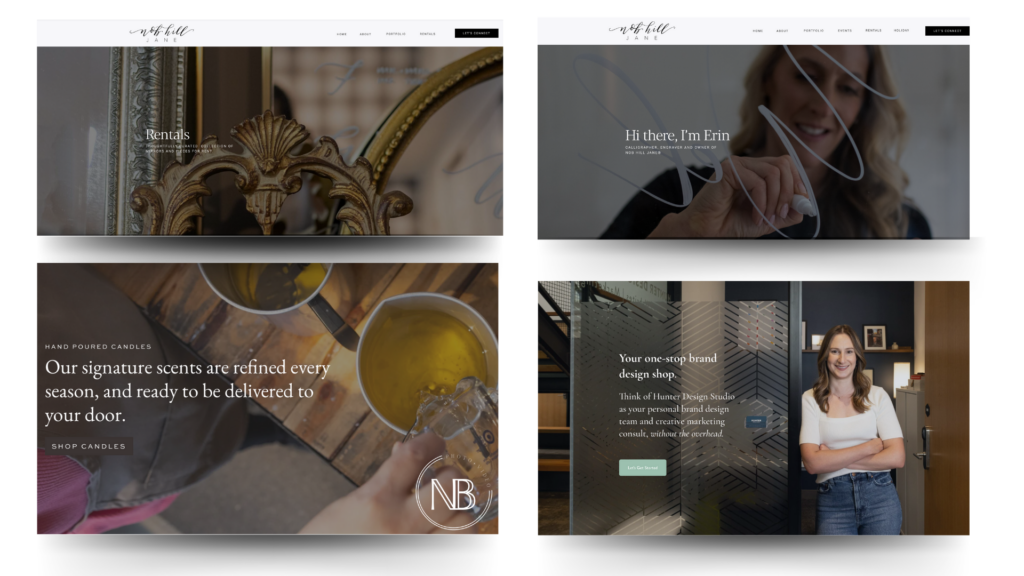
Enhanced Storytelling
Copywriters value strong, relevant imagery too. These kinds of images bring the words on the page to life, adding a whole new dimension that copy alone can’t achieve. This powerful mix of words and visuals is eye-catching and guides your visitors through your site, clearly showing them where to go and what to do.
Sam Boettger, a professional copywriter, explains it like this:
“The words you choose are the foundation for your whole website, and they’re key in deciding what images will work best. When you nail your copy, you and your photographer will know exactly which photos you need – ones that match your process and what you offer. It’s all about making sure your website is a clear, visual extension of your brand.” – Sam Boettger, Sam Bee Writes

Pro Tip: Jumping straight into web design is a common pitfall for many business owners. Most web pros agree: start with your copy. Why? Because without it, you risk having a nice-looking site that misses the mark with your audience, potentially causing confusion and driving them away.
As Sam shares, “Start with the copy. It’s essential. It guides your website’s entire design and helps you and your brand photographer stay in sync, from the first meeting to the photo shoot.”
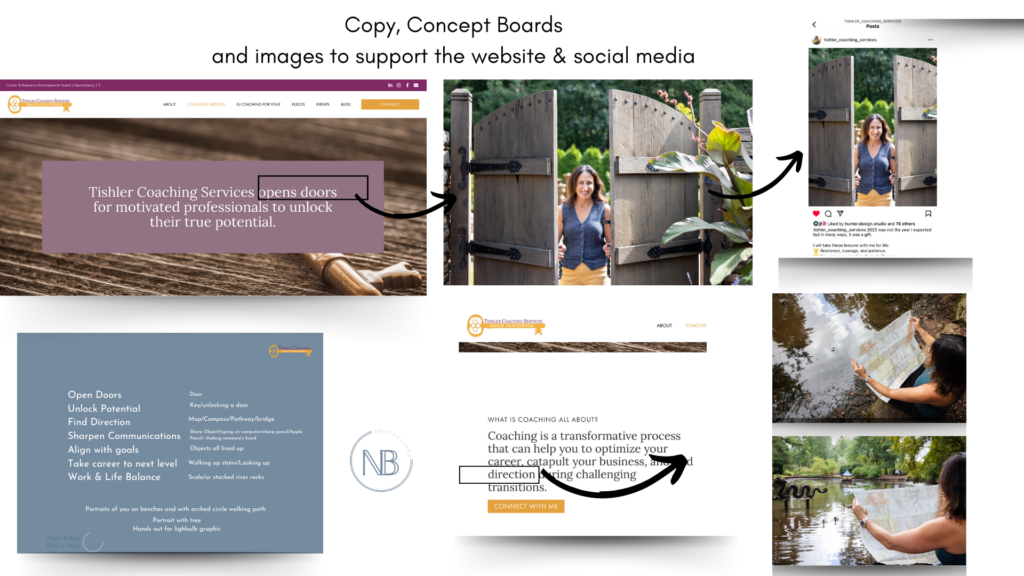
The Six Essential Brand Images Every Website Needs
#1 Portraits of You and Your Team
In today’s marketplace, people want to know who they are investing in, and who they are doing business with. Putting a face to the business is critical (and if you’re camera-shy, check out this video– I’ve got you covered).
But not all portraits are the same. While traditional portraits can be useful for certain businesses, I find environmental portraits to be more impactful– especially on a website!
All too often the About Page just includes simple headshots. I suggest using a variety of images, not just those where you’re directly facing the camera.
Environmental portraits are an excellent way to show your face while also showcasing you in action, in your workspace, or interacting with a client!
Environmental portraits are some of the most important images I take as a brand photographer because they are incredibly versatile– you can use them on your services pages, about page, home page, and more.
As a bonus, they are easy to use on social media!
Check out these environmental portraits. They really capture the personality of my clients and the values of their brand:
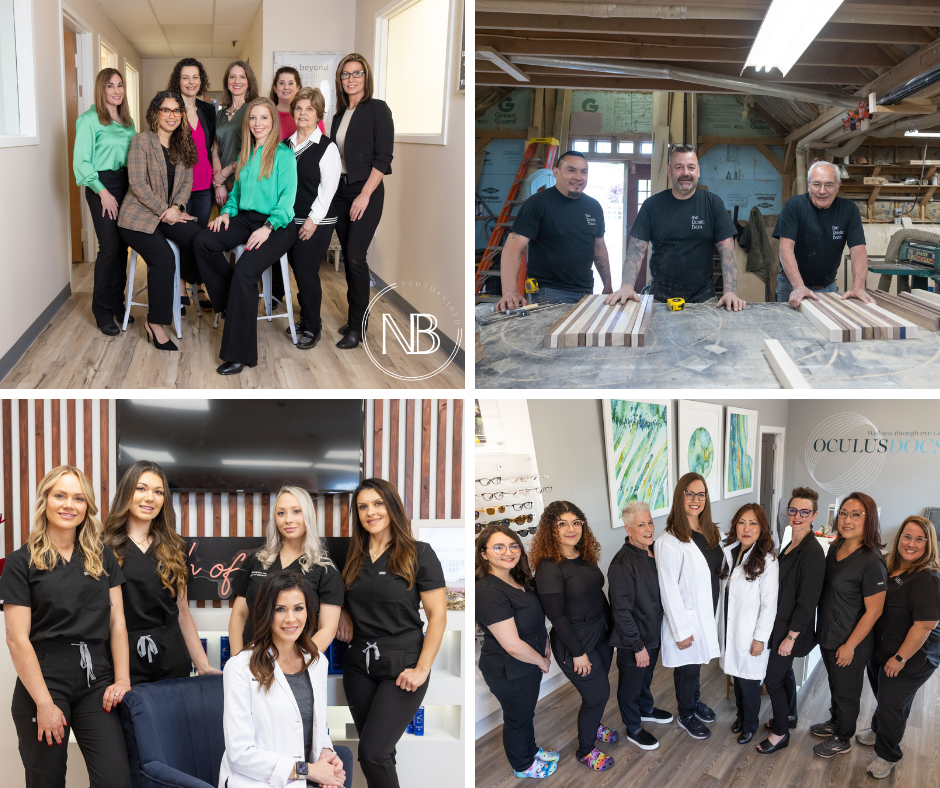
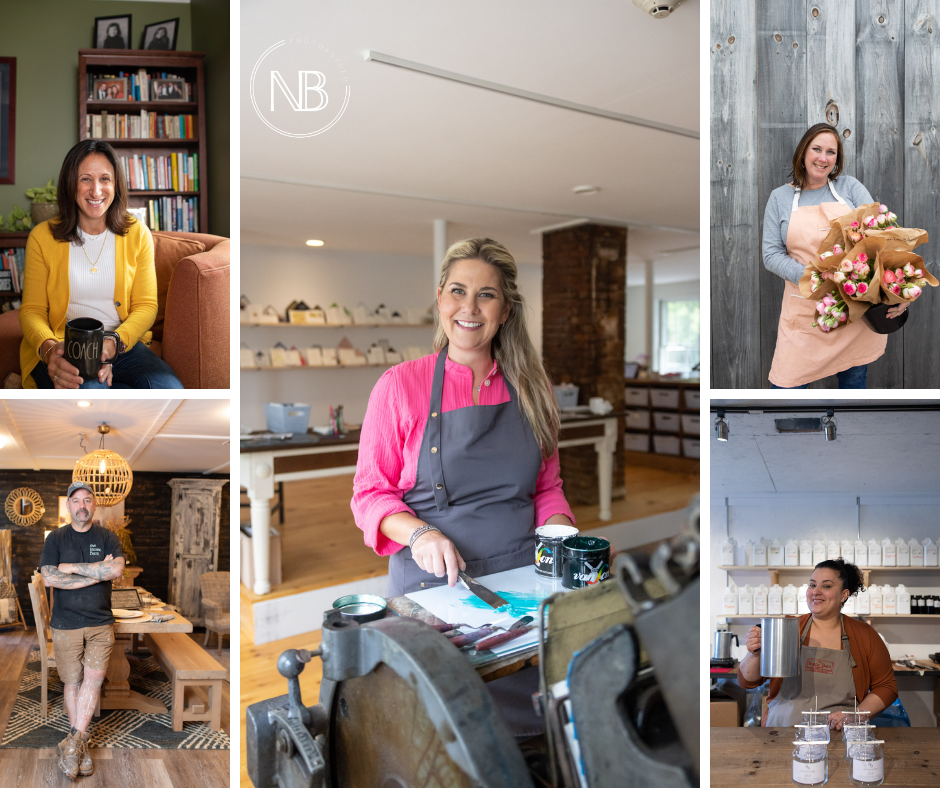
#2 Horizontal Images
While most of your brand’s images will be vertical for social media, don’t forget about horizontal imagery. An experienced brand photographer knows the importance of these, especially for your website.
Why horizontal? Because they fit perfectly into web layouts, banners, and headers.
Think of banner images as your website’s front door greeter – and they’re not just for the top of the page anymore, they’re all over!
Use them to showcase your work process, products, or even short looping videos. Some standout examples are Nob Hill Jane, a Connecticut calligraphy studio and The Rustic Barn. With my photos, they’ve given their website a complete makeover.
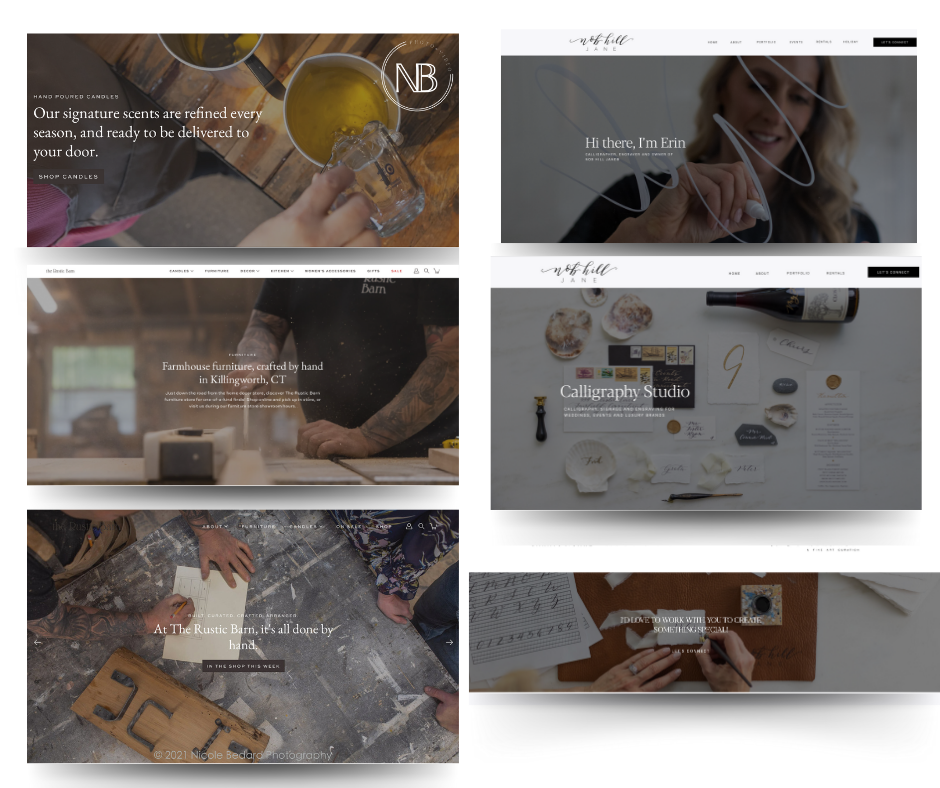
Pro Tip: Banner sections are perfect for video clips! For a dose of inspiration, you can also take a peek at my client Two-Twenty’s website. We’ve used a series of dynamic clips there to give a vibrant introduction to her interior design business.
#3 Interior and Exterior Location Images
For businesses with a physical, brick-and-mortar location, interior and exterior photos are crucial. You want people to recognize your store from the street, see the welcoming interior, and feel like they’re already a part of your world even before they step in.
These interior photos of a local denim shop and a furniture store make it look so warm and welcoming that visitors can’t wait to come and check it out for themselves:
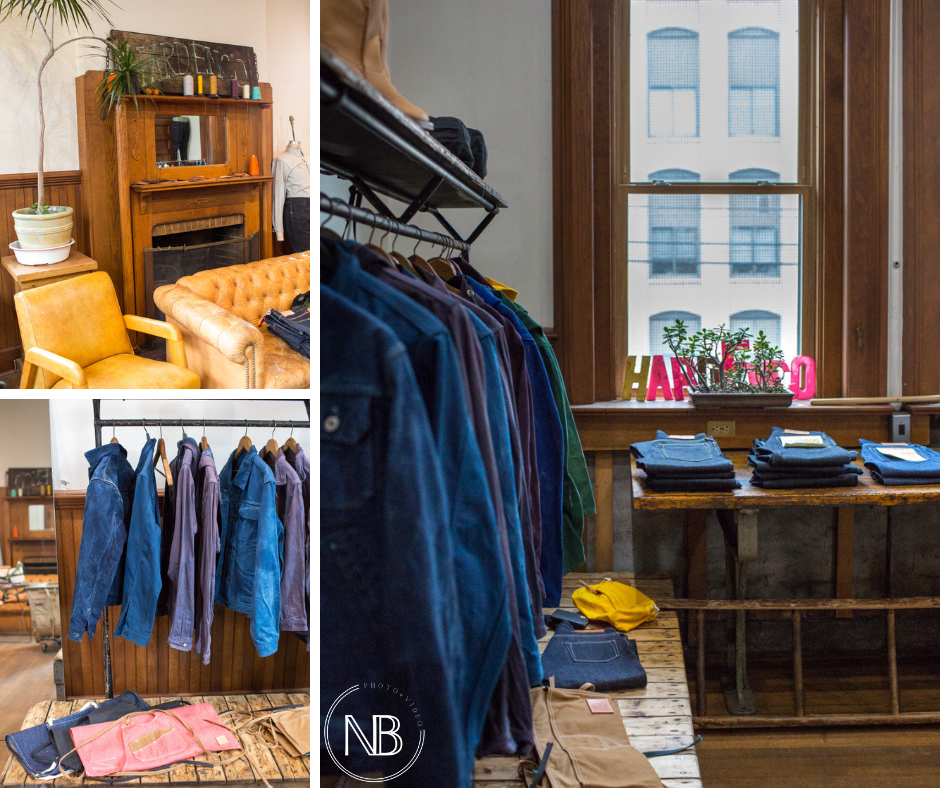
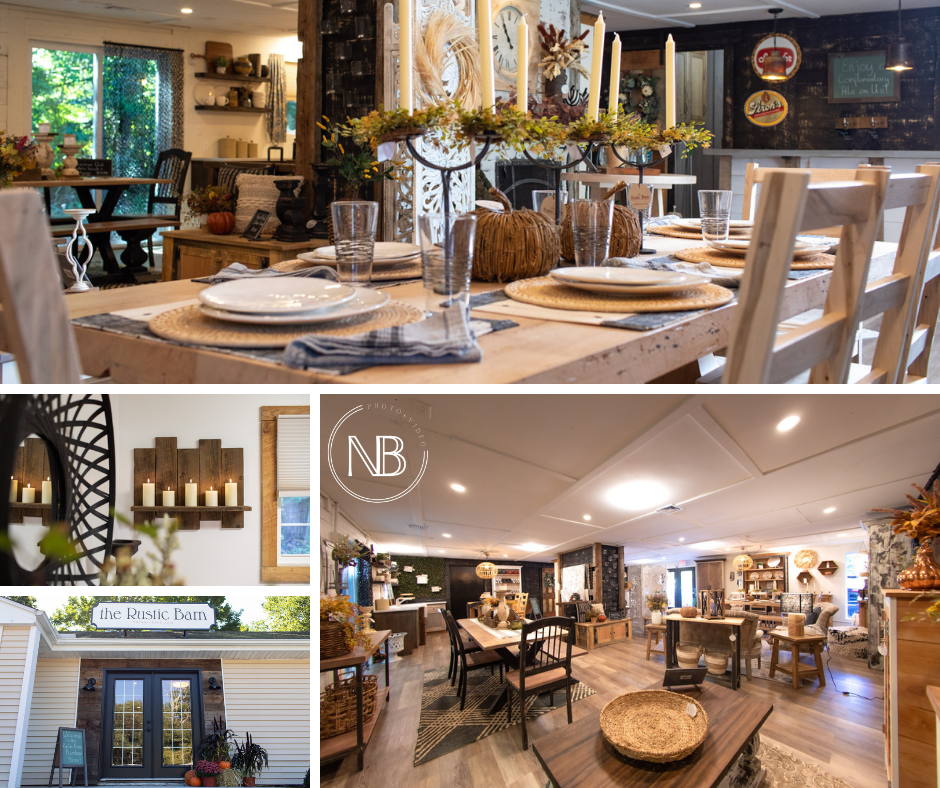
Don’t forget to capture yourself at the checkout counter, interacting with customers – it adds a personal touch.
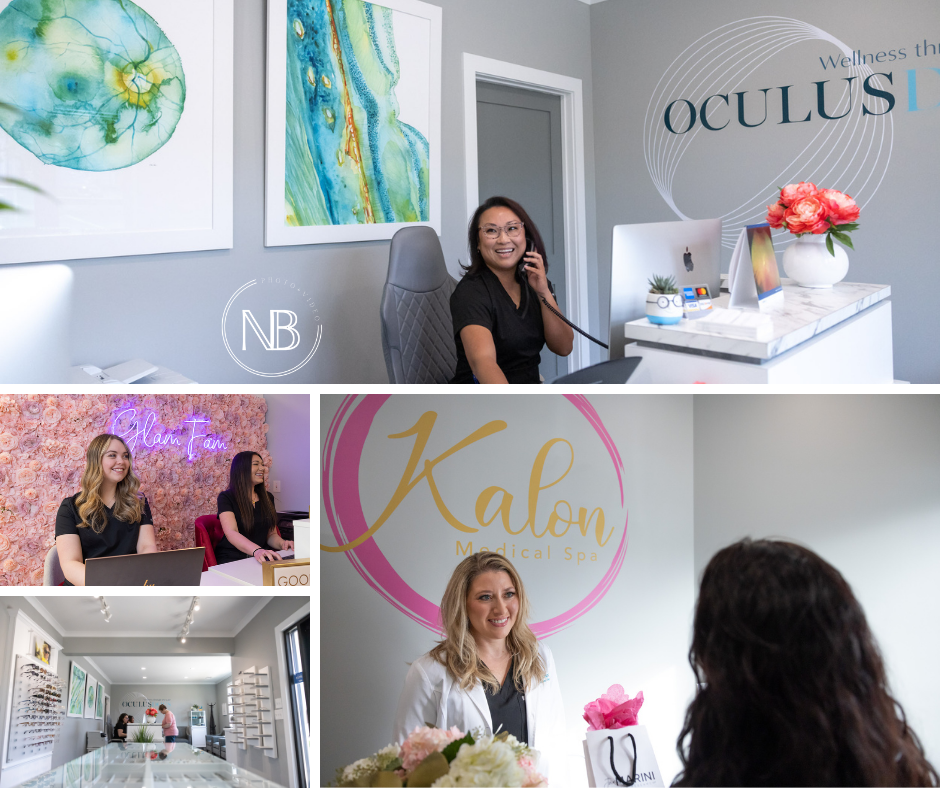
Even if you don’t have a physical storefront, snapping pictures of you in your workshop, studio or office can be equally as impactful for both product and service-based creative businesses!
For example, when shooting brand photos for furniture maker, Steve of The Rustic Barn, we wanted to highlight the collaborative strategy meeting that kicks off any design project:
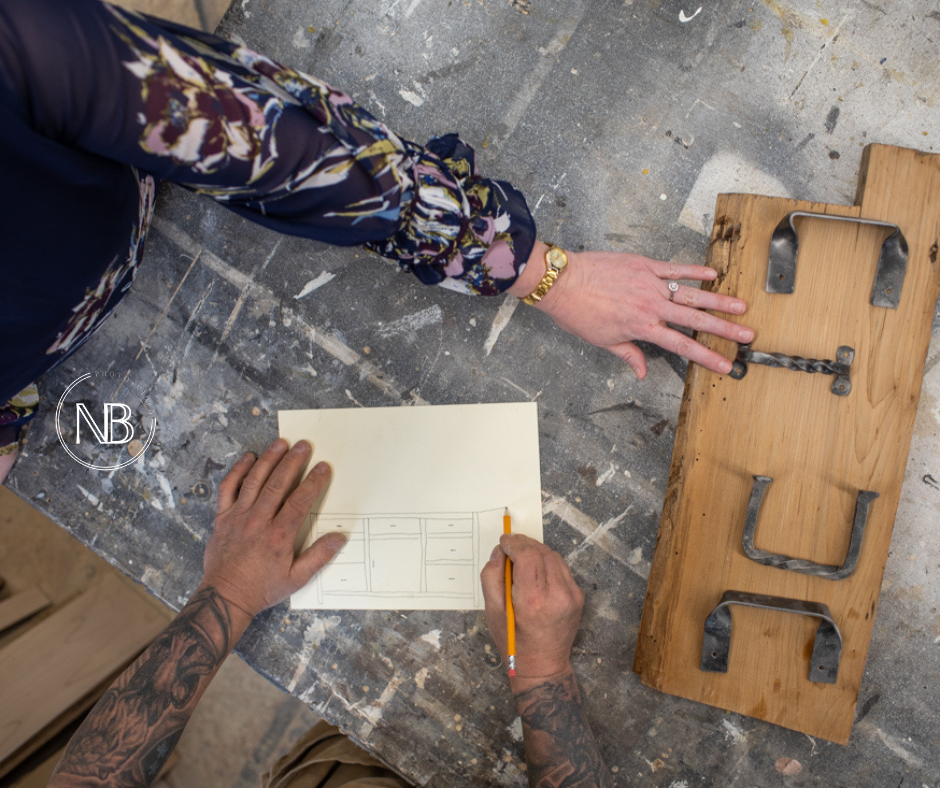
Here are some examples of interior and exterior photos we captured for my client’s eye doctor practice:
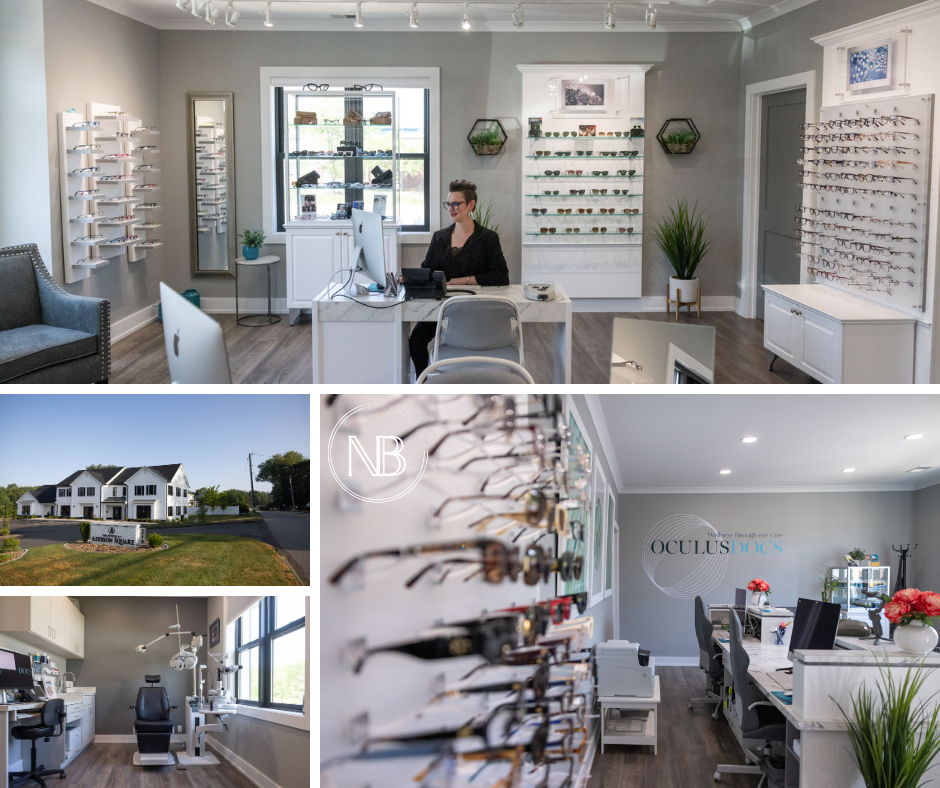
#4 Process Images
When I first start working with a client, I often notice that while their website might have basic images like headshots or product shots, there’s usually a gap in showing the actual business process or customer journey.
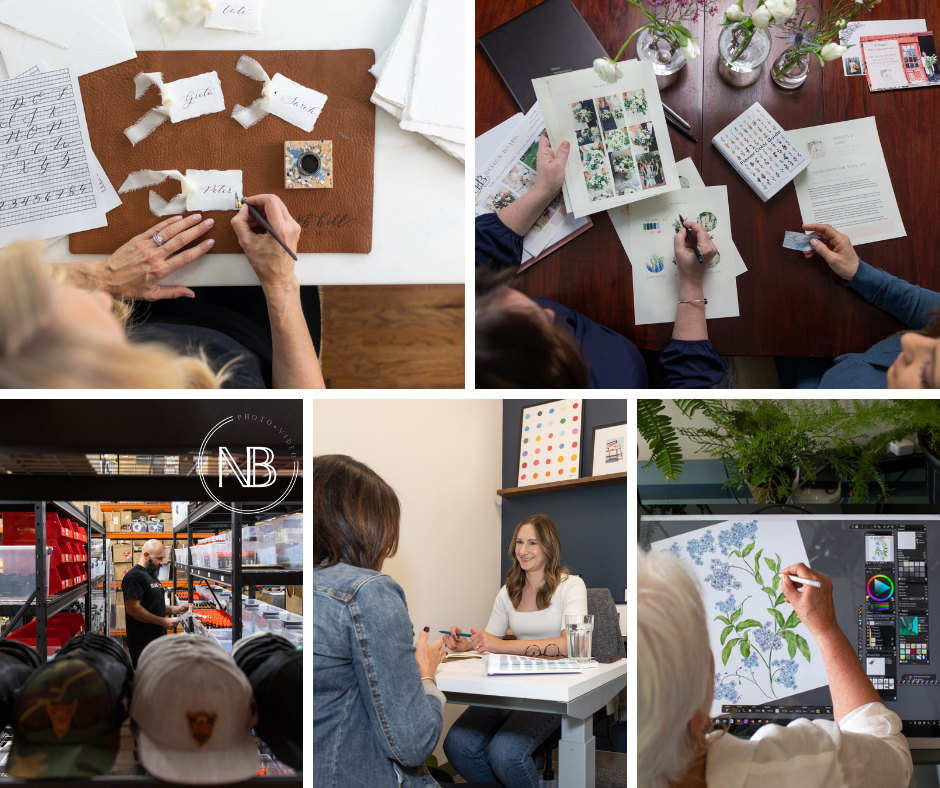
This lack of process imagery is a problem because it leaves potential clients guessing about how things work behind the scenes.
Every website should have a “How to Work Together” section. It’s a straightforward guide, maybe just three steps, illustrating your interaction with clients.
Here’s an example directly from my website:
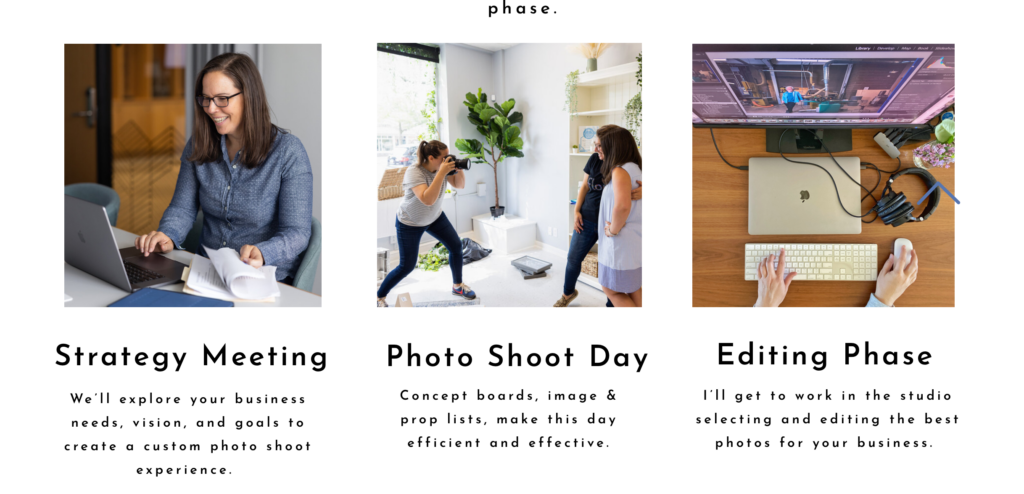
Each step should be accompanied by a picture, whether it’s you on a call planning a project, sketching initial designs, or using software to create something.
Without these, your audience misses out on visual cues that help them understand and picture the stages of working with you – from start to finish.
These images are vital in grounding your audience’s expectations and helping them see what it’s really like to work with you!
#5 Detail Images
Close-up shots, or detail images, are super important for showing off the quality and special touches of your products or services. These shots capture the little things that make your business stand out.
Whether it’s the texture of a material, the intricate design of a product, or a key part of your service, detail images zoom in on what sets you apart.
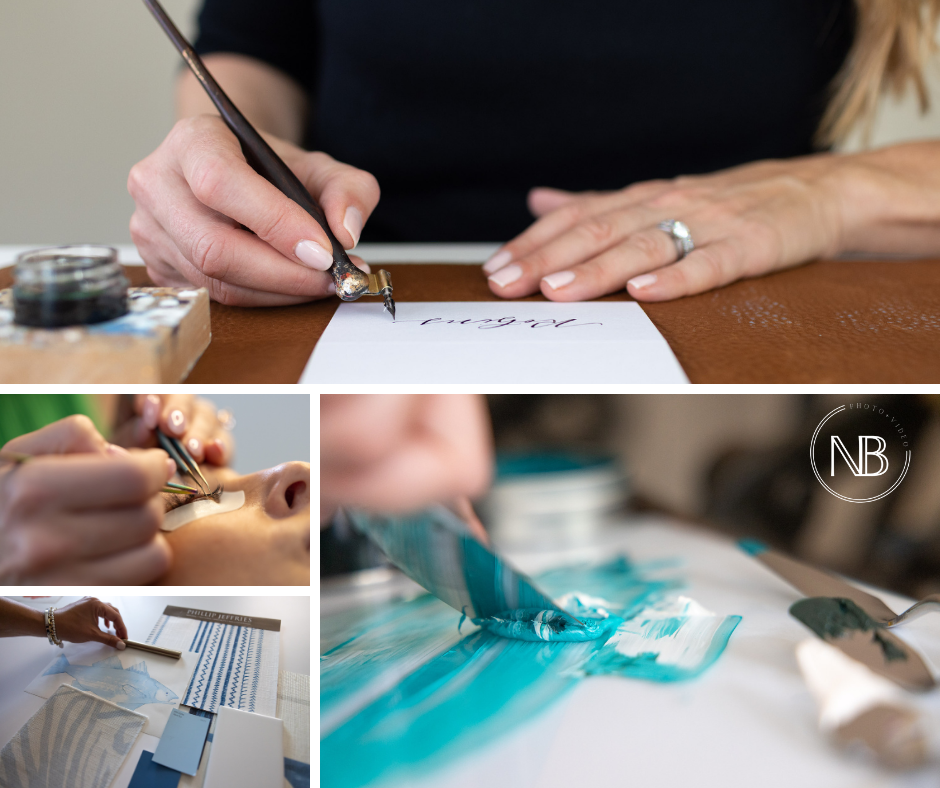
Plus, they often work wonders as banner images on your website because they grab the attention of potential customers and clients, pulling them in to learn more about what you offer.
If you’re selling a product, these detail shots can build trust with your customers. They get to see exactly what they’re buying, with no surprises.
This clarity and transparency can be a huge confidence booster for anyone about to make a purchase.
In the examples below, you’ll notice how I’ve used detail images in unique ways. First, for a product-based business, I captured the fine craftsmanship of their work aprons. Then, in the second example, I focused on a service-based business and the meticulous attention a wedding floral designer gives to preparing a bride’s bouquet. These images highlight the skill and care in each process.
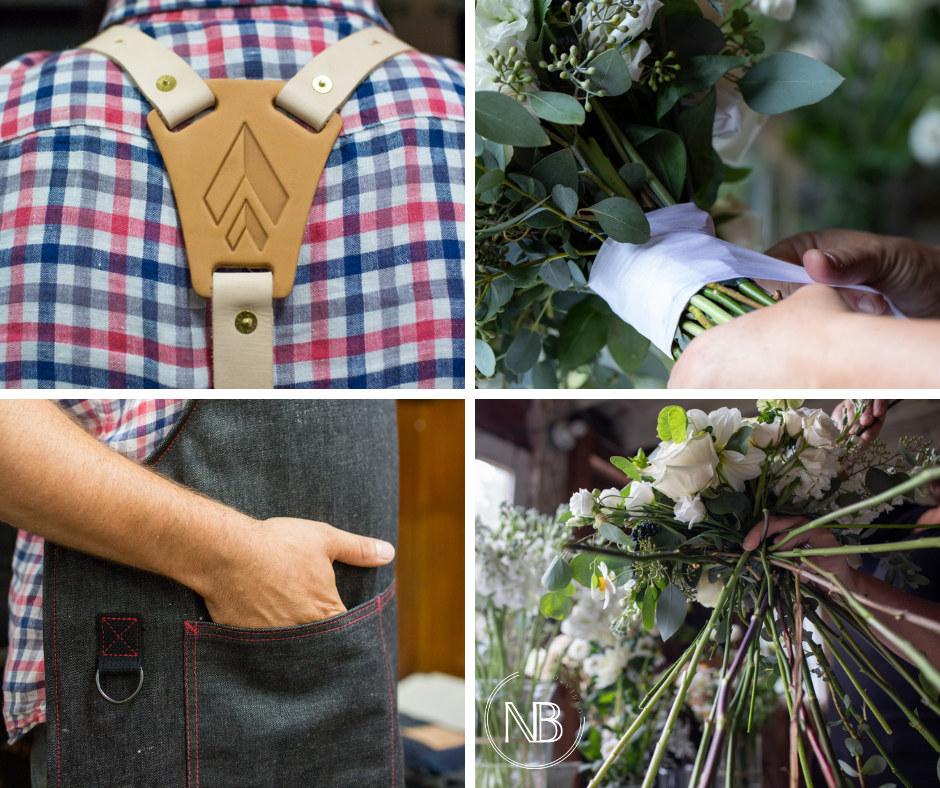
In short, detail images are a small but mighty tool in making your website more engaging and trustworthy.
#6 Product Images (Still and Lifestyle)
If you sell products, the shop page of your website needs to be eye-catching. Mix up still product shots with lifestyle images to give context. This allows people to see not just what you’re selling but how they can use or enjoy the product.
This project with Beard Octane captures the difference between still images and lifestyle product images:
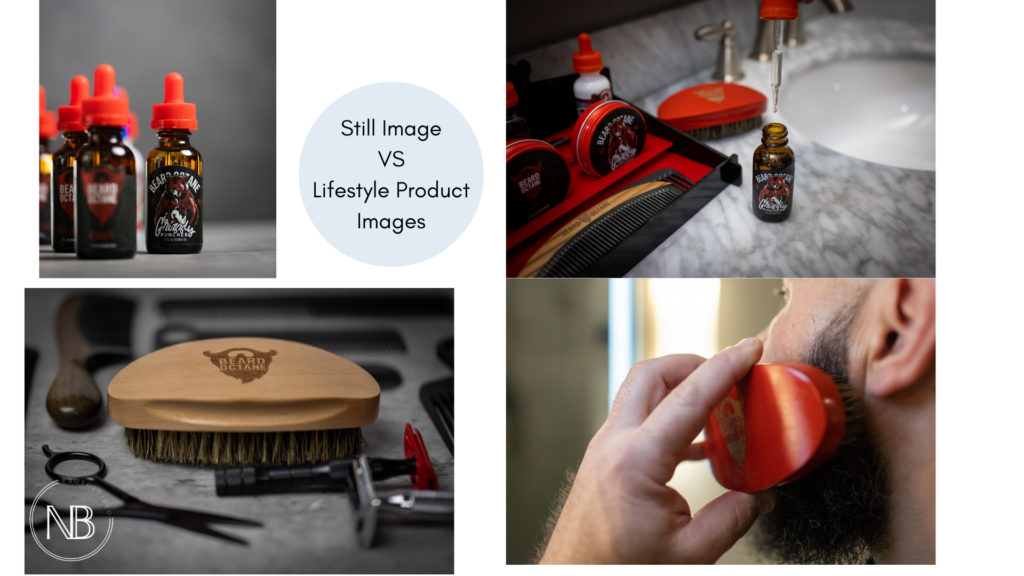
And don’t forget the close-ups! They show the quality and uniqueness of what you offer, like the intricate stitching on a handmade dress or the finishing touches on a custom piece.
Pro Tip: Keep the customers you want to attract in mind. For example, if you’re an artist aiming for upscale clients, use images that show your art in an elegant setting. This can really help highlight your work’s appeal.
Make the Most of Your Images
Once you have these brand photos, use them everywhere (get your money’s worth)! Put them on your Google Business Profile, share them in social posts, and, of course, showcase them on your website.
In the process of rebranding your website, remember that images aren’t just decorations. They’re powerful tools that tell your story, showcase your products, and invite customers into your world.
So take a moment to think:
What do your current images say about you?
Could they be telling a more compelling story?
I hope these tips help you create a website that not only looks great but also connects deeply with your audience.

Looking for more brand photography guidance? Be sure to subscribe to my email newsletter for fresh brand inspiration, delivered to your inbox monthly (and receive a free gift)!
If you’re interested in working with a brand photographer who specializes in helping creative businesses shine online, I’d be thrilled to support you.
Click here to explore my services and book a free Discovery Call.
